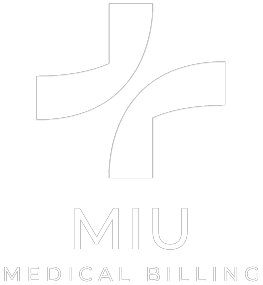Introduction
Acrochordon, or, in layman’s language, a skin tag, is a noncancerous, benign skin growth usually found in areas such as skin folds in the body. Although they cause no harm, they still might be indicated to be surgically removed in certain situations, like bleeding or irritation, as they can be a source of discomfort and cosmetic concern for the patient. Hence, it is important to know about the removal indications, procedure, insurance coverage, and the correct medical codes used for it in the claims.
As in any medical billing case, it demands high accuracy while using the correct ICD-10 codes for acrochordons, or skin tags, so that the claim submission is smooth, leading to prompt reimbursements and compliance. This blog will walk you through navigating the variations in skin tag coding within the context of Texas-based practice standards.
What Are Skin Tags?

An acrochordon, or skin tag, is a soft, small, skin-colored growth commonly found in the neck region, groin, armpits, or even eyelids. These tags are composed of collagen fibers and blood vessels encased by the skin.
Leading Causes:
Factors contributing to the formation of skin tags are
- Obesity
- Pregnancy
- Skin-to-skin or skin-to-clothing friction
- Insulin resistance
- Genetics
When is the removal treatment medically indicated?
Oftentimes, the removal of skin tags is due to cosmetic reasons, but medically necessary removal is indicated when:
- It bleeds frequently
- It is infected or irritated.
- It interferes with the normal physiological functions, e.g., vision, if it is near the eye.
- If the doctor suspects malignancy, i.e., a cancerous lesion
ICD-10 Codes for Skin Tags
The primary ICD-10 code dedicated to acrochordons, or skin tags, is L91.9. This code stands for “Other hypertrophic disorders of the skin” and is used when there’s no underlying condition present with the skin tag, and the removal is yet necessary in dermatology billing. Let’s say a patient comes to the dermatologist because he feels discomfort from the skin tag due to irritation and bleeding, but there’s no underlying condition; the tag is noncancerous. This medically necessitates the removal of the skin tag, and the code L91.9 is used. If a patient comes in for the removal of a skin tag that does not cause any discomfort, but the patient wants to get rid of it for cosmetic reasons, code Z41.1, which states “Encounter for cosmetic surgery,” is used.
In another scenario, if the patient has a skin tag that is proven to have neoplastic/cancerous characteristics, a more specific code is used called D23, which refers to “other benign neoplasms of skin.” Every patient is different; hence, it is crucial to thoroughly document the clinical symptoms or pathology supporting medical necessity.
When to Use ICD-10 Codes for Skin Tag Removal
Cosmetic Treatment vs. Medical Need
Cosmetic procedures are not covered by Texas-based insurance companies. It is important to meet the following prerequisites to fulfill the criteria for reimbursement:
- Discomfort or pain noted in the clinical documentation
- Proof of persistent irritation or bleeding
- Interference with bodily or routine functions (e.g., vision, shaving, clothing)
The Required Clinical Notes:
- Number, location, and size of the skin tag
- Brief description of signs and symptoms
- Chief complaint of the patient
- Supporting photos in some cases
Variations in Insurance Coverage
- Pre-authorization is necessary for Medicare and most private insurers in Texas when it comes to medical necessity for skin tag removal.
- Verification with local payers such as Blue Cross Blue Shield of Texas or Molina Healthcare is important.
Billable vs Non-billable ICD-10 Codes for Skin Tags
It is crucial to know the difference between billable and non-billable ICD-10 codes for maximum accuracy, to avoid denials in claims, and to ensure claim acceptance. Below is the table that outlines and compares the billable vs non-billable ICD-10 codes relevant to skin tags, including their descriptions and coding status for medical billing and documentation purposes.
Billable
| ICD-10 Code | Description |
| L91.8 | Other hypertrophic disorders of the skin Often used for skin tags with no underlying cause |
| L91.9 | Hypertrophic unspecified disorder of the skin Particularly used in case of insufficient documentation for more codes, e.g., when the skin tag cause is not clarified |
| D23.1 | Other benign neoplasm of skin of other and unspecified parts of the face These are used when the skin tags in question are present on the face |
| D23.2 | Other benign neoplasms of the skin of the ear and the external auricular canal Typically used when benign skin tags are present on the ear |
| D23.5 | Other benign neoplasms of the skin of the trunk Used when the skin tags are present on the back or torso |
| D23.9 | Other benign neoplasm of skin, unspecified Used for unspecified body area (when the location is not documented clearly) |
| Q82.8 | Other specified congenital malformations of the skin Used in rare cases when the skin tags are considered to be congenital anomalies |
Non-billable
| ICD-10 Code | Description |
| L91. | Hypertrophic disorders of the skin (category only) This is a category header and is not valid for submission. |
| D23. | Other benign neoplasms of skin ( a category) This is a category code and not billable independently. Must be specified by body region, e.g., D23.1 (Other benign neoplasm of skin of other and unspecified parts of face) |
| Q82. | Congenital malformations of the skin This is also a category holder and requires a more specific subcode like Q82.8 |
Billing Tips for Dermatology Practices in Texas

Ways to Avoid Common Claim Denials
- Do not bill the skin tags under ICD-10 code L91, which are indicated for cosmetic-only removals.
- Always include CPT codes like 11200 for skin tags that are up to 15 in number and 11201 for each additional 10.
ICD-10 & CPT Pairing Instructions
- ICD-10 L91.8 with CPT 11200 for removal based on medical necessity
- ICD Z41.1 with CPT 11200 for removal based on cosmetic reasons
Real-Life Billing Scenarios
When a patient comes in with a skin tag on an eyelid that hinders vision. For this, the ICD-10 code L91.8 and the CPT code 11200. If the skin tag is not causing any discomfort and the patient wants it to be removed for cosmetic reasons, the ICD-10 code used will be Z41.1, and the CPT code 11200. The patient will pay this, and if sent as a claim, the insurance will deny the claim. If the patient has any underlying condition with the skin tag, such as a cancer, the ICD-10 used will be D23.5, and the CPT code 11400 (excision of benign lesion) will be used. However, this should be backed up by pathologically proven documentation.
Top ICD-10 Coding Mistakes to Avoid
- Use of outdated codes
- Insufficient Supporting Patient Documentation
- ICD-10 billing errors due to misclassification of lesions (e.g., when used for cysts and warts).
Tools & Resources for Accurate Dermatology Coding
Accuracy in medical billing and coding can be greatly enhanced by the appropriate tools and skin tag coding resources, Dallas. Some of the tools for accurate dermatology coding are
- CMS ICD-10 Resources
- AAPC Coder Lookup Tool
- ICD10Dataa.com
The reference apps most commonly used in dermatology coding are
- SuperCoder
- MD Coder
- Kareo EHR (compatible with Texas location)
It would be highly beneficial if your medical coders were trained professionals. They can enroll in certain Texas-based training programs known as
- ICD-10 Bootcamps
- AAPC Texas Chapter Workshops
- Online CEU courses
Conclusion
Whether you are a dermatologist or a medical coder, you should know the value of accurate ICD-10 coding for skin tags, as it is not just a billing formality but a critical aspect of dermatology revenue cycle management in Texas. Gaps in documentation or medical coding can lead to billing hassles like delayed payments and denials. This mostly occurs due to insufficient medical evidence for medical necessity and is considered a cosmetic concern.
To have your medical billing streamlined as a dermatologist or a local billing consultant for dermatology, it is best to have experts who know what codes, documentation, and claims they are dealing with.
Frequently Asked Questions About ICD-10 Codes for Skin Tags
What is the correct ICD-10 code used for skin tags?
The ICD-10 code designated to skin tags is L91.8, “Other hypertrophic disorders of the skin.”
Can the L91.8 ICD-10 code be used for all skin tag cases?
No, these are only used for “other hypertrophic disorders of the skin.”
When does insurance cover a skin tag removal?
When it is only medically indicated for removal, i.e., when causing bleeding, irritation, or functional loss.




